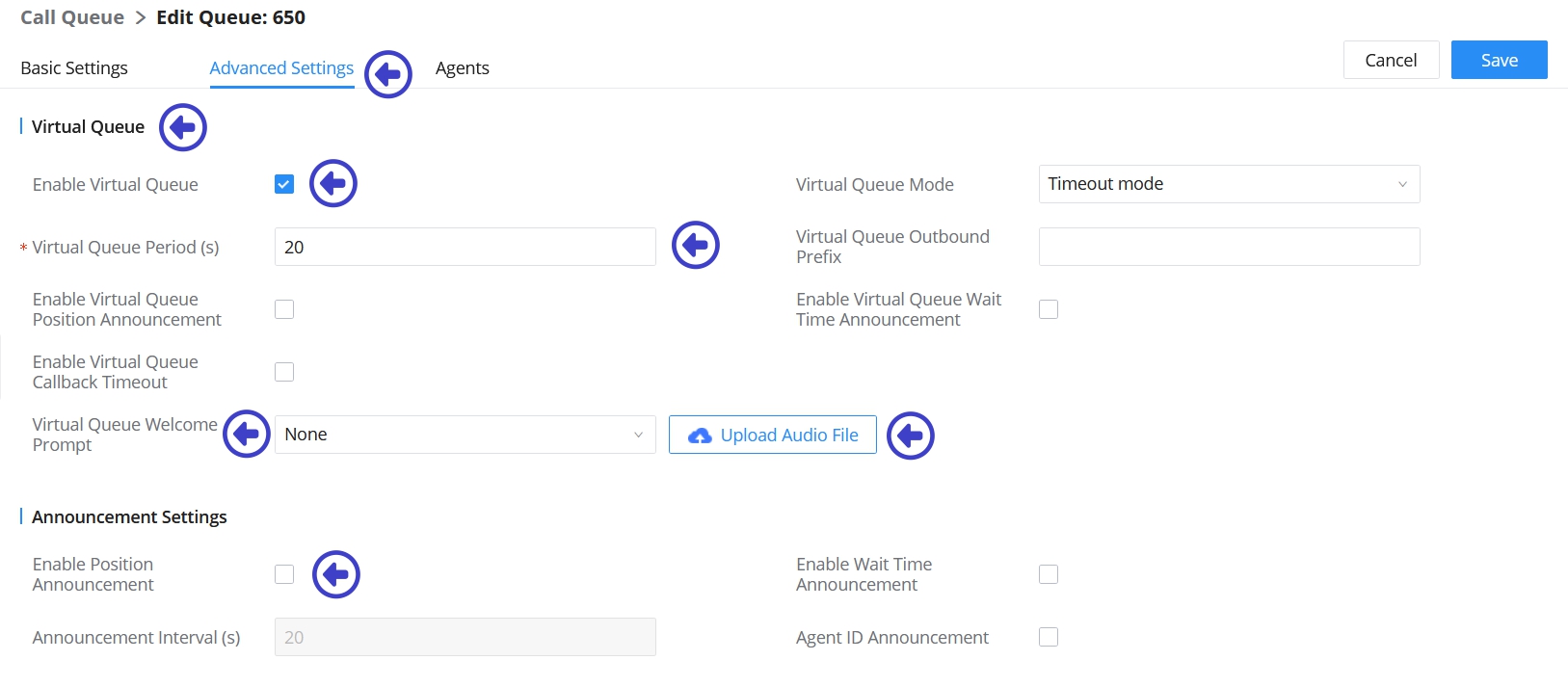Virtual Queue Call-back for Call Centers
Once a caller is in the Call Center - Call Queue, they can choose to remain on hold, or request a call-back to a number of their choice. The system will hold their line in Queue, and call them back once an Agent is available. It can be used for busier Call Centers, Medical Offices and other similar higher volume agencies.
This function should only really be used if you have enough supporting Analog lines, or VoIP trunks dedicated in part to the Call Center functions. You may also want to dedicate a separate set of lines or VoIP trunks to the outbound call-back for virtual queue. Advantages and disadvantages are covered at the end of this article.
Virtual Queue - Overview
You may remember the image below from the Call Center - Call Queue page. However, in this image - we have changed the flow to explain what happens with Virtual Queue...

The caller can opt to leave the line, and enter in a call-back number. Once the other callers in queue have finished ahead of them, and an Agent is available - the system holds the agent, and calls back the person (or, persons) in their "Virtual Queue" order.
Stepdown for setting up Virtual Queue
In your phone system for an existing /created Call Queue: CALL FEATURES / CALL QUEUE - click on the edit button to modify the queue.
Go to the Advanced Settings TAB.

First item to consider when using Virtual Queue is to enable the Announcement Settings / Enable Position Announcement.
Beside that, you may wish to consider the 'Wait time Announcement'. A word of caution - that option is not accurate due to other call lengths, and is an "average weighted estimated wait time" only. Several factors can affect it, and mislead the caller in queue.
Note: This does not play in Virtual Queue - it plays during the "Regular Call Queue" to advise callers in of their current position & wait time. This is an indicator to them that they "may" want to consider opting for the "Call Back Method".
IE: If 16 callers are in queue and wait time is 30 minutes - a 'system call back' may be their option of choice.
Then set the additional settings and features indicated in the image above. NOTE: Again, you can upload a custom sound file that plays when a caller is called back and they answer their phone. Unmarked options are not commonly used, and we recommend testing each to see if it fits your company needs.
Advantages / Disadvantages of Virtual Queue
- Free up lines for new callers to call in.
- Allows callers to move to other tasks on their own and automates system 'call back' functions.
- Still keeps the caller in line / in their order of queue, for the next available agent.
- You can separate / designate specific 'outbound' lines or trunks for the call-back, to save telephone line costs. IE: Instead of needing 16 lines, you may only need 8 lines for inbound calls in total. You can dedicated 2 lines for controlled outbound call backs. This helps 'control over-all telephone line costs'.
- Freed Agent may be held a bit longer during call back if they are designated for a 'virtual queue call back' in certain cases.
- We do recommend considering dedicating a set of out-bound lines, for optimal reliability.
- Not all Virtual Queue callers may opt to answer their call back, dropping them off the queue completely. IE: Timeout settings.
- The more callers who are in Virtual Queue, the longer it may take an Agent to clear and close them off, as the entire process actually extends the "total transaction time" between your company and the callers.
- Another situational problem can occur: If you close at 5 PM, and 5 callers are in Virtual Queue at 5 PM - the Agents may end up staying past closure to complete and clear the queue. IE: You may need to consider 'inbound call queue' scheduled time settings to account for an earlier ending of taking new calls in the regular queue to combat overage.